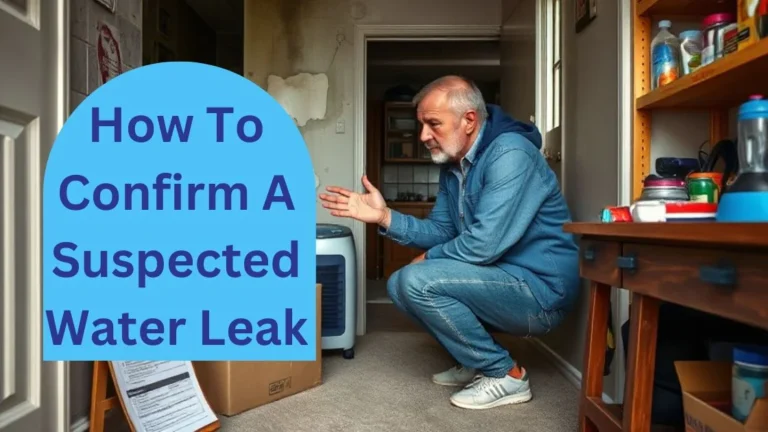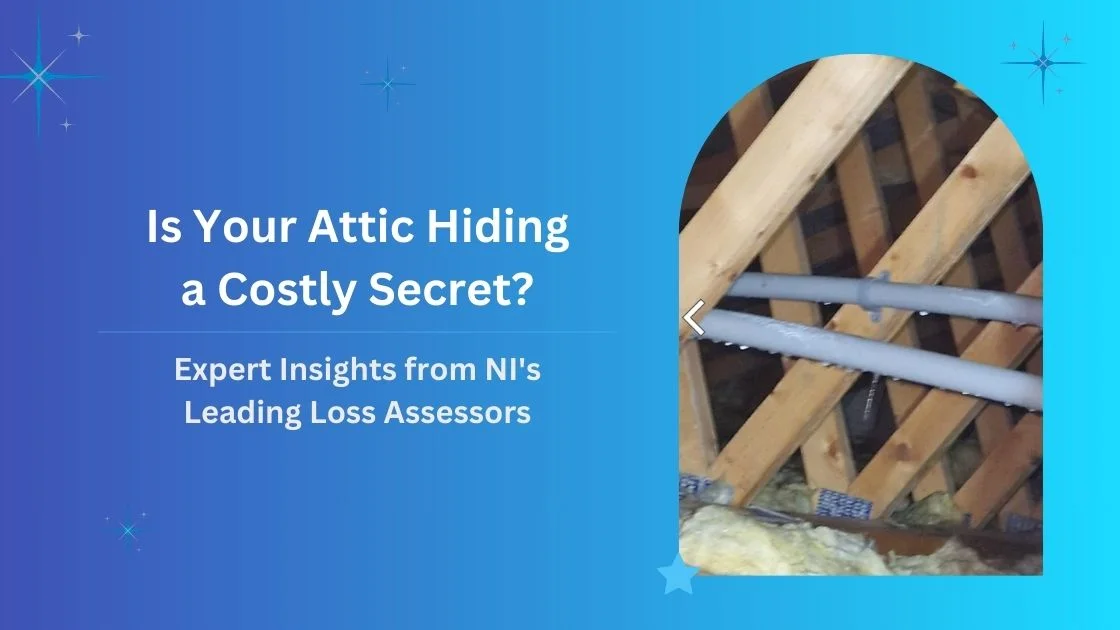A suspected water leak can be worrying and, if left unchecked, may lead to costly damage. Knowing how to confirm your suspicions is crucial for preventing further issues. In this article, we’ll guide you through simple steps to determine if you have a water leak and what to do next.
- To confirm a suspected water leak, begin by observing common signs such as damp patches, mould growth, or unusual sounds of dripping.
- Monitor your water meter by noting the reading after turning off all water sources; any change may indicate a leak.
- Check high-risk areas, such as taps, under sinks, and behind appliances for moisture.
- Consider using a dye test in toilets to detect flapper valve leaks.
- If problems persist, professional leak detection may be necessary to accurately identify hidden leaks.
Exploring further can provide you with essential tips for ongoing leak prevention and detection strategies.
Common Signs of Water Leaks
Although water leaks can often go unnoticed until they cause significant damage, there are several common signs of potential water leaks that homeowners can observe to catch them early.
Damp or discoloured patches on ceilings, walls, or floors serve as essential moisture indicators, signalling potential water intrusion. Consistent wet areas in driveways or gardens, particularly during dry spells, may also reveal hidden leaks.
Furthermore, a sudden drop in water pressure can be a glaring symptom of plumbing issues. Homeowners should be vigilant for unusual noises, such as dripping or running water when all taps are off, as these are classic leak symptoms.
Detecting Leaks With Water Meters
Regularly monitoring your water meter is an effective method for detecting leaks in your plumbing system.
Begin by turning off all water-using appliances and noting the initial meter reading to establish a baseline. Wait for 30 minutes, then check the meter again; any movement in the reading indicates a potential leak.
For enhanced reading accuracy, close the internal stop tap and repeat the process to differentiate between indoor and outdoor leaks.
This practice not only helps to identify minor leaks early but also prevents extensive water damage and reduces waste. An unexpected increase in readings may suggest hidden leaks requiring professional investigation.
Regular meter calibration ensures your readings are reliable, fostering peace of mind in your home.
Household Leak Detection Techniques
Effective household leak detection begins with a thorough inspection of high-risk areas such as bathrooms and kitchens, where leaks commonly occur. But what are the immediate actions after finding a leak?
Inspect Common Leak Areas
When inspecting for common leak areas in the home, attention to detail is essential.
Start by examining the most frequently overlooked spots, particularly around bathroom fittings and kitchen appliances. Inspect the following areas diligently:
- Taps and faucets for drips or moisture
- Showers and bathtubs, especially at seals and drains
- Under sinks, where pooling water can indicate leaks
- Washing machines and dishwashers, checking hoses and connections
Additionally, consider outdoor piping and look for corrosion or unusual puddles on dry ground.
By being proactive in these inspections, you can prevent potential damage and ensure a safe, comfortable living environment.
Conduct a Dye Test
A dye test is an invaluable and straightforward technique for homeowners to detect leaks in their toilets.
To conduct this simple test, add a few drops of food colouring to the toilet tank and refrain from using the toilet for 15-30 minutes. If the dye appears in the bowl, it indicates a leak from the flapper valve, signalling the need for replacement to prevent further water loss.
This cost-effective method not only aids in leak detection but also promotes effective toilet maintenance, saving homeowners from wasting hundreds of litres of water daily.
Regularly performing dye tests can be an integral part of your leak prevention strategy, helping you catch issues early and avoid unexpected increases in water bills.
Use Advanced Technology
Advanced technology has revolutionised the way homeowners detect water leaks, offering a range of tools that enhance accuracy and efficiency.
By employing these advanced methods, you can quickly identify potential issues, preserving both your home and peace of mind.
Key Leak Detection Tools
Discover the essential tools for identifying and addressing leaks effectively.
Using these cutting-edge technologies guarantees a proactive approach to leak detection, fostering a sense of security and community among homeowners.
When to Seek Professional Help
Persistent water leaks can quickly escalate from minor inconveniences to significant structural issues if not addressed promptly.
If you notice continuous leaks or water damage despite your best DIY efforts, it’s time to seek expert help. A local leak detection professional can conduct a thorough assessment, leveraging their plumbing expertise to diagnose and remedy complex or hidden leaks that may lurk within walls or beneath floors.
These professionals possess specialised tools and skills to identify potential issues before they develop into major problems. Engaging a qualified plumber not only ensures compliance with safety standards but also provides peace of mind, often accompanied by guarantees on their work.
Don’t wait for leaks to worsen; taking proactive measures can save you time, money, and stress.
Regular Maintenance Tips
Establishing a regular inspection schedule is crucial for the early detection of leaks and the prevention of significant damage.
Timely repairs not only protect your property but also extend the lifespan of your plumbing system.
Routine Inspections Schedule
Conducting routine inspections is essential for maintaining the integrity of your plumbing system and preventing costly water leaks.
Establishing an appropriate inspection frequency allows you to identify issues in high-risk areas before they escalate. Aim for inspections every 3-6 months and focus on the following:
- Check appliances such as washing machines and dishwashers for wear or damage.
- Monitor water pressure monthly, ensuring it stays within the ideal range of 2.8-4.1 bar (40-60 psi).
- Inspect bathrooms, kitchens, and utility rooms for signs of leaks.
- Evaluate outdoor plumbing and irrigation systems seasonally, especially after heavy rainfall.
Educating household members about common signs of leaks fosters a proactive environment, encouraging prompt reporting of unusual changes in water usage or pressure.
Prompt Repairs Importance
Addressing minor leaks promptly is essential for maintaining the overall health of your plumbing system and preventing more extensive damage.
The urgency of repairs cannot be overstated; early intervention not only preserves the integrity of your pipes but also mitigates significant cost implications.
Regular inspections of water-related areas, such as bathrooms and kitchens, can help identify leaks before they escalate, saving homeowners up to 10% on their water bills.
Moreover, educating household members on leak detection fosters a proactive approach, enhancing the longevity of your plumbing system.
Simple measures, such as insulating pipes in colder climates and monitoring water pressure, further safeguard against potential issues.
Investing in prompt repairs today guarantees a reliable and efficient plumbing system tomorrow.
Family Education on Leak Awareness
Water leaks can silently wreak havoc on homes, making family education on leak awareness essential. Each family member should understand their roles and leak responsibilities to foster a proactive approach to home maintenance.
- Educate everyone on common signs of leaks, such as damp patches and musty odours.
- Ensure everyone knows the location of the main water valve and how to shut it off quickly.
- Teach the importance of monitoring water bills for unexpected increases.
- Encourage regular inspections of high-risk areas like bathrooms and kitchens.
Actions After Leak Detection
Detecting a leak can be a stressful situation, but taking immediate and informed actions is essential to minimise potential damage.
Firstly, contact a qualified plumber to assess the leak and carry out necessary repairs, as homeowners are generally responsible for leaks within their property boundaries.
For leaks beyond the water meter, reach out to your local water supplier.
After repairs, keep a close eye on your water bills for any unusual increases, which may indicate lingering issues.
In addition, review your leak insurance policy to ensure coverage aligns with your needs, providing peace of mind in the face of unexpected water-related challenges.
Preventing Future Water Leaks
Taking proactive measures to prevent future water leaks is essential for maintaining the integrity of your home and avoiding costly repairs.
Emphasising seasonal preparedness can greatly reduce the risk of leaks. Consider these strategies:
- Conduct regular inspections of bathrooms and kitchens to detect potential issues early.
- Insulate pipes, especially in colder climates, to prevent freezing and bursting.
- Educate all household members about signs of leaks to ensure timely action.
- Perform routine maintenance on appliances and irrigation systems to catch leaks before they escalate.
Key Takeaways
- Check for damp or discoloured patches on walls, ceilings, and floors to identify visible signs of leaks.
- Monitor your water meter; any movement after turning off all water sources may indicate a hidden leak.
- Inspect taps, faucets, and appliances for drips or pooling water, as these are common areas for leaks.
- Conduct a dye test in your toilet cistern; if dye appears in the bowl, it signals a flapper valve leak.
- Listen for unusual sounds like dripping or running water when appliances are off, as these may indicate potential leaks.
Stop Leaks in Their Tracks – Act Now!
Don’t let hidden leaks wreak havoc on your home—every minute counts! The longer you wait, the greater the risk of costly water damage.
We’ve got you covered with free advice from Northern Ireland’s premier leak detection service. Our experts will identify leaks early, protecting your home, your health, and your peace of mind.
Ready to safeguard your property? Book your leak assessment today and let our specialists prevent minor drips from becoming major disasters.
Don’t delay—protect your investment and ensure a safe, dry home.



